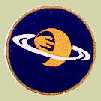|
- Do the following:
- Sketch the face of the moon, indicating on it the locations of at least five seas and five craters.
- Within a single week sketch the position of the moon in the sky at the same hour on three different evenings. Explain the changes observed.
- Tell what factors keep the moon in orbit around the earth.
- Do ONE of the following:
- Photograph or locate on a map of the sky a planet at approximately weekly intervals at the same time of night for at least 4 weeks. Explain any changes noticed on the photographs or map.
- Find out when each of the five visible planets will be observable in the evening sky during the next 12 months and compile this information in the form of a chart or table.
- Do ONE of the following:
- In a sketch show the position of Venus, Mars or Jupiter in the sky at approximately weekly intervals at the same time for at least 4 weeks.
- Using a compass, record the direction to the sun at sunset at approximately weekly intervals for at least 4 weeks in spring or fall (for 6 to 8 weeks in summer or winter) and relate this information to the seasons of the earth.
- With the aid of diagrams explain the relative positions of sun, earth, moon at the times of lunar and solar eclipses and at the times of New, First Quarter, Full, and Last Quarter phases of the moon.
- Using the shadow of a vertical pole in sunshine, lay out a true north-south line (a meridian). Then, using a line and the pole on another day, measure the altitude of the noontime sun and determine your latitude.
- Identify in the sky at least 10 constellations, four of which are in the Zodiac. Identify at least eight conspicuous stars, five of which are of first magnitude. Then do the following:
- Show in a sketch the position of the Big Dipper and its relation to the North Star and the horizon early some evening and again 6 hours later the same night. Record the date and time of making each sketch.
- Explain what we see when we look at the Milky Way.
- With the aid of diagrams (or real telescopes if available) explain the difference between reflecting and refracting telescopes. Describe the basic purpose of a telescope, and list at least three other instruments used with telescopes.
- Do the following:
- Describe the composition of the sun, its relationship to other stars and some effects of its radiation on the Earth's weather. Define sun-spots and describe some of the effects they may have on this radiation.
- Identify at least one star that is red, one that is blue, and one that is yellow, and explain the meaning of these colors.
- Do ONE of the following:
- Visit a planetarium or observatory and submit a report to your counselor both on the activities occurring there and on the exhibits of instruments and other astronomical objects you observed.
- Spend at least 3 hours observing celestial objects through a telescope or field glass, and write a report for your counselor on what you observed.
- Name different career opportunities in astronomy. Explain how to prepare for one of them. List the high school courses most useful in beginning such preparation.
|
|
